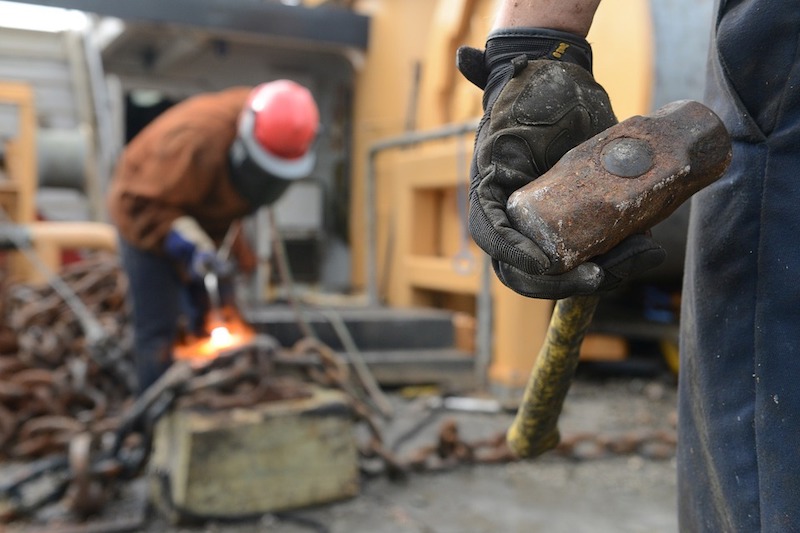Amid a persistent skilled labor shortage that continues to challenge the building sector, constrain housing supply and exacerbate affordability, Katerra, a technology company redefining the construction industry, today announced it has launched a new apprenticeship program that offers the necessary training and skills for the future of construction. Registered with and approved by the U.S. Department of Labor, Bureau of Apprenticeship and Training, credentials earned through the Katerra Apprenticeship Program are portable and recognized in all U.S. states and three territories.
The Katerra Apprenticeship Program offers a combination of technical classroom instruction and hands-on training for a variety of trade occupations including carpentry, plumbing, electrical and HVAC. Apprenticeships for other occupations are anticipated in the future. The educational curriculum associated with each of Katerra’s programs is accredited through the National Center for Construction Education and Research (NCCER). While individual programs vary depending on the complexity of the occupation, all Katerra apprenticeship programs require approximately 144 hours of technical instruction per year and 2,000 hours of on-the-job training.
“Katerra is leading the construction industry in the application of new technologies and methodologies to deliver better quality buildings faster and more efficiently,” said Samantha Rist, head of self-perform at Katerra. “We developed our apprenticeship program to train the next generation of construction workers to use cutting-edge tools and the latest technology. Now, Katerra apprentices can gain portable credentials for use throughout their careers, at Katerra and beyond.”
As part of the program, Katerra offers a series of week-long boot camps at its state-of-the-art factories for related technical instruction training modules. The boot camps – delivered in both English and Spanish – are designed to ensure each participant receives individualized support. English-as-Second Language (ESL) classes are also offered.
“The lack of skilled laborers is one of the biggest challenges the building sector faces,” said NAHB Chairman Greg Ugalde, a home builder and developer from Torrington, Conn. “Apprenticeship programs like Katerra’s that offer portable credentials and teach new technologies are important as the industry seeks to broaden recruitment and increase interest in construction as a career.”
To ensure equal opportunity for training and development in the construction industry, Katerra partners with local organizations in the areas where it operates to recruit for its apprenticeship programs, including from local high schools, workforce development programs, the military, and general industry. Interested candidates can apply for employment at Katerra’s website.
Related Stories
| Jan 15, 2014
6 social media skills every leader needs
The social media revolution—which is less than a decade old—has created a dilemma for senior executives. While its potential seems immense, the inherent risks create uncertainty and unease.
| Jan 15, 2014
Report: 32 U.S. buildings have been verified as net-zero energy performers
The New Buildings Institute's 2014 Getting to Zero Status report includes an interactive map detailing the net-zero energy buildings that have been verified by NBI.
| Jan 13, 2014
AEC professionals weigh in on school security
An exclusive survey reveals that Building Teams are doing their part to make the nation’s schools safer in the aftermath of the Sandy Hook tragedy.
| Jan 13, 2014
6 legislative actions to ignite the construction economy
The American Institute of Architects announced its “punch list” for Congress that, if completed, will ignite the construction economy by spurring much needed improvements in energy efficiency, infrastructure, and resiliency, and create jobs for small business.
| Jan 12, 2014
The ‘fuzz factor’ in engineering: when continuous improvement is neither
The biggest threat to human life in a building isn’t the potential of natural disasters, but the threat of human error. I believe it’s a reality that increases in probability every time a code or standard change is proposed.
| Jan 12, 2014
5 ways virtual modeling can improve facilities management
Improved space management, streamlined maintenance, and economical retrofits are among the ways building owners and facility managers can benefit from building information modeling.
| Jan 10, 2014
What the states should do to prevent more school shootings
To tell the truth, I didn’t want to write about the terrible events of December 14, 2012, when 20 children and six adults were gunned down at Sandy Hook Elementary School in Newtown, Conn. I figured other media would provide ample coverage, and anything we did would look cheap or inappropriate. But two things turned me around.
| Jan 10, 2014
Special Report: K-12 school security in the wake of Sandy Hook
BD+C's exclusive five-part report on K-12 school security offers proven design advice, technology recommendations, and thoughtful commentary on how Building Teams can help school districts prevent, or at least mitigate, a Sandy Hook on their turf.
| Jan 10, 2014
Resiliency, material health among top AEC focuses for 2014: Perkins+Will survey
Architectural giant Perkins+Will recently surveyed its staff of 1,500 design pros to forcast hot trends in the AEC field for 2014. The resulting Design + Insights Survey reflects a global perspective.
| Jan 9, 2014
How security in schools applies to other building types
Many of the principles and concepts described in our Special Report on K-12 security also apply to other building types and markets.

















